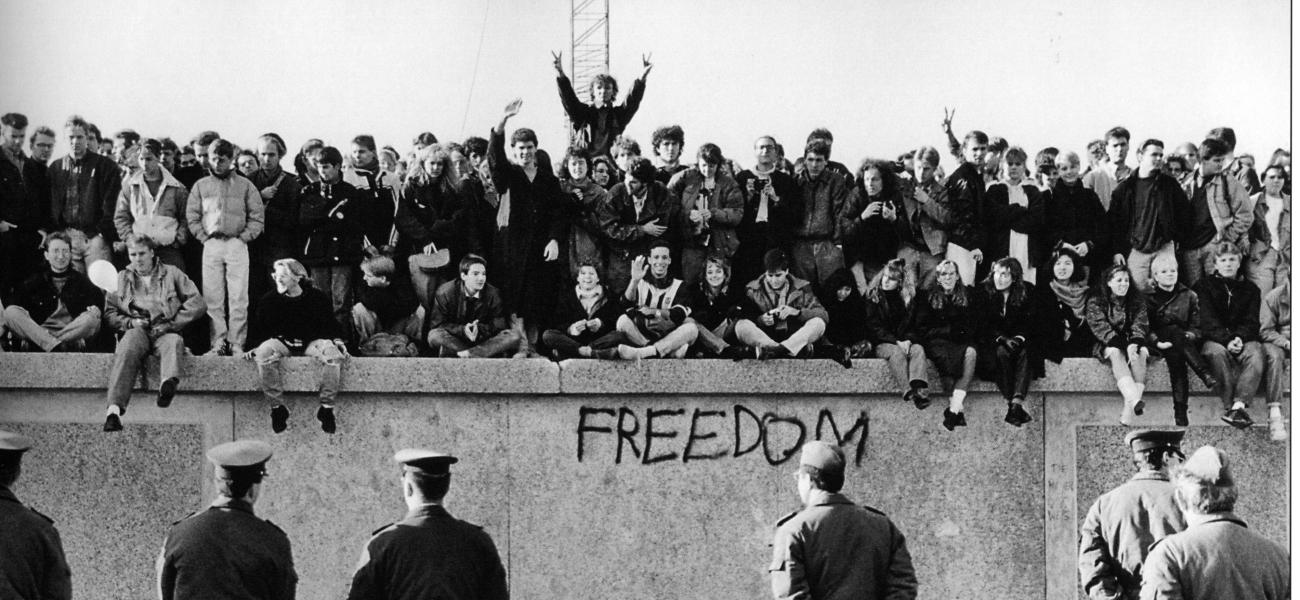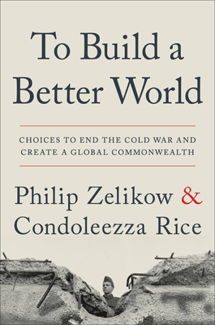
Rice and Zelikow on ‘Catalytic Choices’
“To Build a Better World: Choices to End the Cold War and Create a Global Commonwealth”
By Philip Zelikow and Condoleezza Rice
Twelve Books, September 2019
 Having both entered U.S. government service in the second half of the 1980s, Philip Zelikow and Condoleezza Rice then spent three and a half decades alternating between making and shaping America’s foreign policies, and this extensive experience shows in their September 2019 book, “To Build a Better World: Choices to End the Cold War and Create a Global Commonwealth.”
Having both entered U.S. government service in the second half of the 1980s, Philip Zelikow and Condoleezza Rice then spent three and a half decades alternating between making and shaping America’s foreign policies, and this extensive experience shows in their September 2019 book, “To Build a Better World: Choices to End the Cold War and Create a Global Commonwealth.”
The book constitutes a well-researched analysis of what the authors, who have gained wide recognition for their work both in the U.S. government and in academia, describe as catalytic episodes in history, such as the end of the Cold War and the subsequent demise of the Soviet Union. The authors credit the statecraft displayed at the time by world leaders such as George H.W. Bush, Bill Clinton, Mikhail Gorbachev, Boris Yeltsin, Margaret Thatcher, Helmut Kohl, Francois Mitterrand and others for ensuring that these two episodes were not accompanied by major international bloodshed.
Of course, that proposition itself is not new. The roles these leaders played in managing the end of the Cold War and the dissolution of the USSR have been described in multiple previous volumes. In fact, Rice and Zelikow already explored these leaders’ statecraft in their 1995 book, “Germany Unified and Europe Transformed: A Study in Statecraft.” What Rice and Zelikow do in this this new volume, however, is not limited to a simple extension of their analysis to some of the tectonic geopolitical shifts that have occurred since 1995, such as the expansion of NATO. They also outline the multiplicity of choices that some of the late Cold War and post-Cold War leaders faced when deciding how to respond to these shifts, and then explain why the choices these leaders ultimately made ended up being “catalytic” thanks to the profound impact they had on the world order.
Interestingly, Rice and Zelikow also weave in biographies of Russian President Vladimir Putin and German Chancellor Angela Merkel, focusing on some of the seminal events that shaped their mindsets early on to try to explain some of the choices they later made as leaders of their respective countries, such as Putin’s reaction to NATO expansion and Merkel’s response to the inflow of Syrian refugees.
However, while fairly meticulous in examining some of what they describe as catalytic choices, the authors pay only scant attention to other choices, such as the disastrous second Iraq war, which, as Harvard’s Stephen Walt wrote, had “fateful consequences” for the United States, “destroy[ing] the balance of power in the Gulf and improv[ing] Iran’s geopolitical position.” Perhaps this is something Zelikow and Rice could address in the next edition of their analytical exercise, along with a more detailed look at the choices made by leaders not only in Beijing, but also in Washington, that have led to what appears to be the most catalytic development in the 21st century so far: the rise of China.
Simon Saradzhyan
Simon Saradzhyan is the founding director of the Russia Matters Project at Harvard Kennedy School’s Belfer Center for Science and International Affairs.
Photo by the University of Minnesota Institute of Advanced Studies shared in the public domain.

